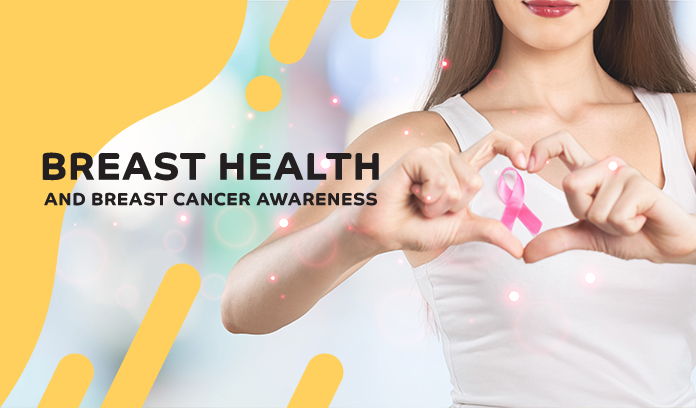Breast cancer is one of the most prevalent forms of cancer affecting women worldwide, making breast health and awareness crucial topics for every individual. In this guide, we’ll delve into the importance of breast health, understanding breast cancer, prevention strategies, early detection methods, and ways to support breast cancer awareness and research.
Breast Self-Examination (BSE)
Breast self-examination involves checking the breasts regularly for any changes in size, shape, or texture, which can help detect breast abnormalities early and promote breast health awareness.
Clinical Breast Examination (CBE)
A clinical breast examination is a physical examination of the breasts performed by a healthcare professional to detect any signs or symptoms of breast cancer and monitor breast health.
Mammography Screening
Mammography screening is a radiological imaging test used to detect breast cancer early in asymptomatic individuals, typically starting at age 40 or earlier for those at higher risk, to promote early detection and improve treatment outcomes.
Breast Ultrasound
Breast ultrasound is a diagnostic imaging test used to evaluate breast abnormalities detected during clinical breast examination or mammography screening and provide additional information about breast health.
Breast MRI
Breast magnetic resonance imaging (MRI) is a diagnostic imaging test used in combination with mammography and ultrasound to evaluate breast abnormalities and assess breast health, particularly in individuals at high risk for breast cancer.
Breast Cancer Risk Factors
Breast cancer risk factors include age, family history, genetics, hormonal factors, lifestyle factors (e.g., alcohol consumption, obesity), and reproductive history, which can influence an individual’s likelihood of developing breast cancer and inform preventive measures.
Breast Cancer Awareness Month
Breast Cancer Awareness Month, observed in October, aims to raise awareness about breast cancer, promote early detection through screening, and support breast cancer research, education, and advocacy efforts.
Breast Cancer Symptoms
Breast cancer symptoms include a lump or thickening in the breast or underarm, changes in breast size or shape, nipple changes (e.g., inversion, discharge), and skin changes (e.g., redness, dimpling), which should be promptly evaluated by a healthcare professional.
Breast Cancer Diagnosis and Staging
Breast cancer diagnosis involves imaging tests, biopsies, and pathology evaluations to confirm the presence of cancer and determine its type, stage, and extent of spread, which guides treatment decisions and prognosis.
Breast Cancer Treatment Options
Breast cancer treatment options include surgery, radiation therapy, chemotherapy, hormone therapy, targeted therapy, and immunotherapy, which may be used alone or in combination depending on the type and stage of breast cancer and individual factors.
Conclusion
Breast health and breast cancer awareness are vital components of overall wellness for individuals of all ages. By prioritizing breast health, understanding risk factors, practising prevention strategies, and supporting breast cancer research and advocacy efforts, individuals can empower themselves and their communities to combat breast cancer and promote a healthier future. Remember to consult a medical professional for personalized guidance and support regarding breast health and cancer prevention. Together, let’s empower ourselves with knowledge and action in the fight against breast cancer.


